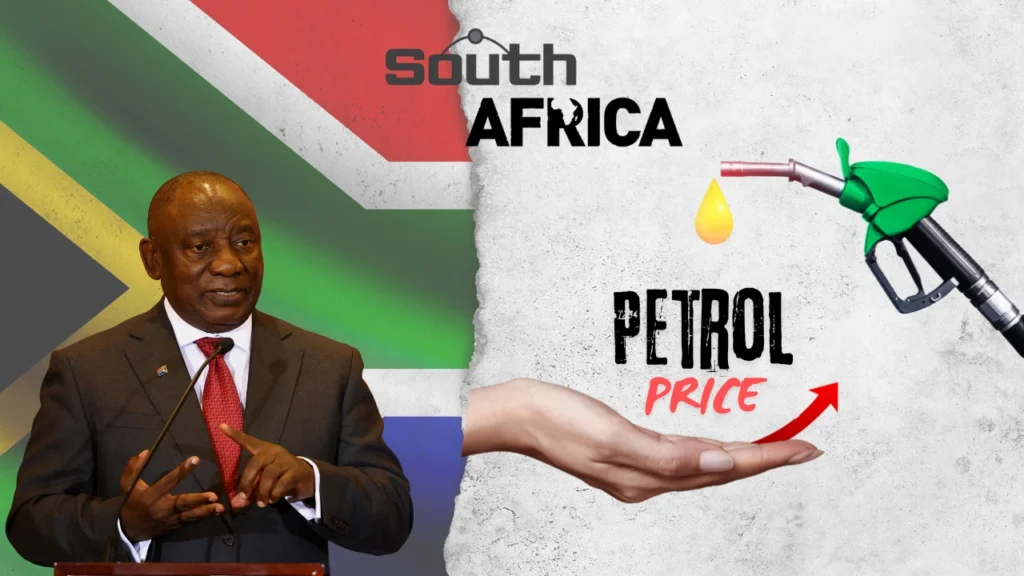South Africa Petrol Price October 2025. In October 2025, South African motorists are bracing for yet another shift in fuel costs as global oil markets, exchange rates, and domestic policies converge to affect pump prices. Fuel pricing remains a delicate balancing act: local currency strength, international petroleum costs, and regulatory measures all play a role.
For ordinary consumers and businesses alike, even small changes per litre can ripple through transport, logistics, food, and goods. This blog delves into the latest forecasts, the drivers behind fuel price moves, and what South Africans should expect (and do) as October approaches.
South Africa Petrol Price October 2025-Overview
| Fuel Type | Expected October 2025 Change |
| Petrol 93 | ↑ ~8 cents per litre |
| Petrol 95 | ↑ ~16 cents per litre |
| Diesel 0.05% | ↓ ~10 cents per litre |
| Diesel 0.005% | ↓ ~9 cents per litre |
| Overall Trend | Petrol up, Diesel down |
Under-/Over-Recovery & Its Implications
One key concept in South Africa’s fuel pricing is “recoveries” whether the retail pump price recovers the full cost of international product prices, import costs, and other adjustments. If pump prices are lower than the cost of supply, then there’s an under-recovery, which signals pressure to raise prices. Conversely, if pump prices exceed supply cost, it’s an over-recovery, which can cushion against price hikes.
What Drives Fuel Price Changes?
1. International Oil & Product Prices
Crude oil prices (e.g. Brent benchmark) and refined petroleum product markets form the baseline of the cost structure. If global crude or refined product costs rise, this tends to push fuel prices upward in South Africa as it imports substantial volumes. For the recent September adjustment, average international product prices had declined, providing downward pressure on fuel costs.

2. Rand-Dollar Exchange Rate
South Africa purchases fuel (or refined components) in US dollars. A stronger rand (i.e. fewer rand per dollar) reduces imported cost burdens; a weaker rand increases them.
In 2025, the rand has shown resilience (e.g. around R17.39 to the dollar) which helps cushion fuel costs.
3. Slate Levy & Pricing Mechanisms
South Africa uses a slate levy mechanism — a self-adjusting balancing item — to smooth out cost disparities across products (petrol vs diesel) and across months. During some months, the slate levy may be zero if balances are favorable. Additionally, the Department of Mineral and Petroleum Resources periodically issues monthly fuel adjustments (first Wednesday or first of the month) guided by pricing formulas.
4. Regional and Distribution Costs
Fuel pricing differs by zone: inland vs coastal zones, as transportation, storage, and distribution costs vary across provinces. Coastal areas often have slightly lower base prices, given proximity to ports. Also, local infrastructure, supply chain bottlenecks, or disruptions (e.g., logistical or loading constraints) can cause deviations in specific areas.
5. Government Policy & Taxes
Taxes, levies (fuel levy, Road Accident Fund levy, etc.), and regulatory decisions (e.g. duty adjustments) feed into the final price.
Recent Fuel Price Moves (Context)
- On 3 September 2025, fuel prices were adjusted: petrol 93 & 95 saw a 4 cent per litre decrease, while diesel (0.05 % and 0.005 %) were slashed by 56–57 cents per litre.
- These reductions occurred because international crude and product prices had fallen, and the rand had marginal strength, reducing cost pressures.
- However, the trend in mid-September is signaling a reversal: petrol under-recovery, upward movement of international product prices, and potential strain on margins.
- Some analysts warn that any weakening in the rand or a spike in international oil costs could intensify pressure on petrol pricing by month end.
How It Affects Consumers & Strategies to Cope
Impact on Households & Transportation
Even a modest increase (say, 10–20 cents per litre) in petrol can stretch household budgets, particularly for people commuting long distances or using multiple vehicles. For businesses reliant on transport (logistics, delivery, agriculture), fuel cost hikes squeeze profit margins or get passed along, increasing prices of goods.
Tips for Consumers
- Fuel up smartly: If you suspect a price rise is imminent, consider filling up before the adjustment (but be cautious not to hoard excessively).
- Drive efficiently: Maintain your vehicle (tyres, filters, alignment) and adopt smoother driving (avoid aggressive acceleration) to squeeze more km per litre.
- Carpool or public transport: Share rides or switch to mass transit where feasible to lower per-person fuel cost.
- Plan routes: Avoid unnecessary detours; consolidate trips.
- Consider fuel-efficient or alternative vehicles: Over time, more fuel-efficient, hybrid, or electric vehicles (EVs) may reduce exposure to volatile fuel costs.
Broader Implications
Fuel cost fluctuations feed into inflation transportation impacts the cost of goods and services, particularly food and essential items. Indeed, in August 2025, South Africa’s inflation was pushed to a 10-month high, partly due to higher food and fuel prices.
Conclusion
In October 2025, South Africans are likely to see a modest increase in petrol prices and a slight decline in diesel, according to mid-month forecasts. The interplay of product recoveries, oil markets, and the rand’s strength will largely determine the final rates. For consumers and businesses, staying alert to announcements and adopting fuel-smart habits can soften the blow of incremental cost pressures.
FAQs for South Africa Petrol Price October 2025
Yes, petrol is expected to rise by about 8–16 cents per litre.
Diesel may drop slightly, by around 9–10 cents per litre.
Global oil prices, the rand/dollar exchange rate, government levies, and transport costs.